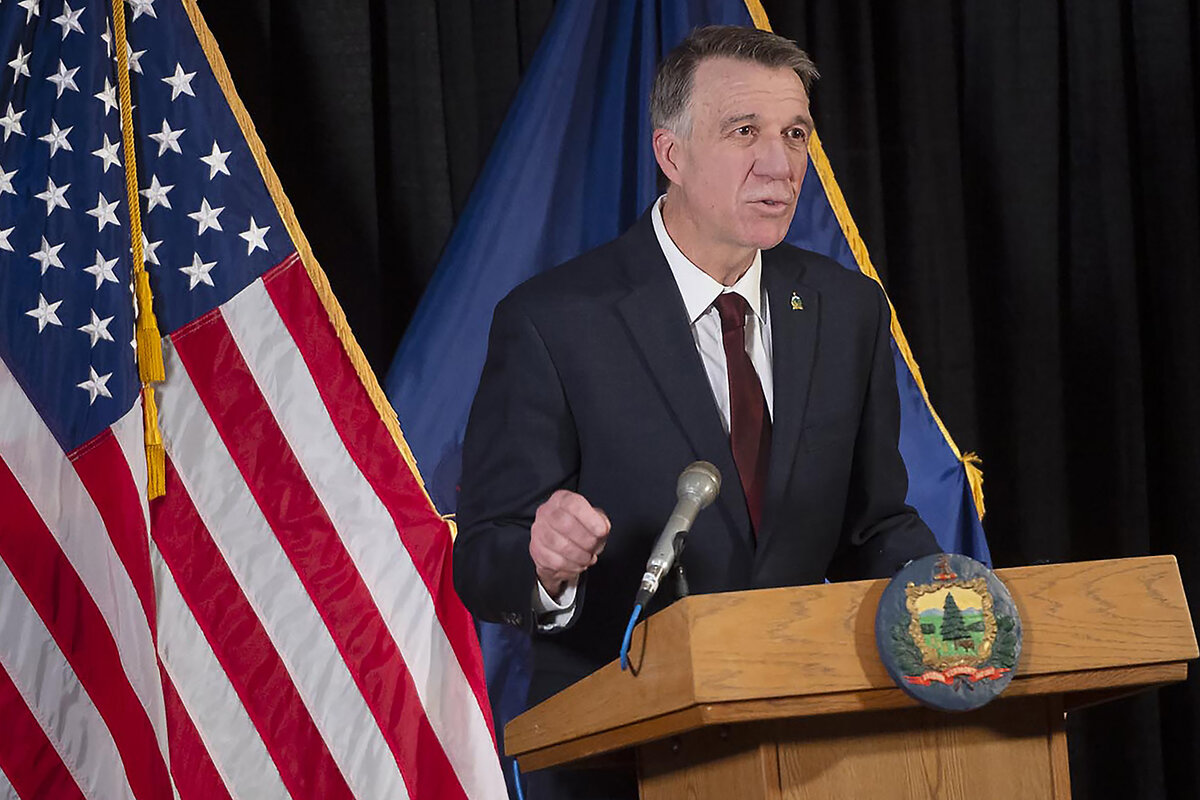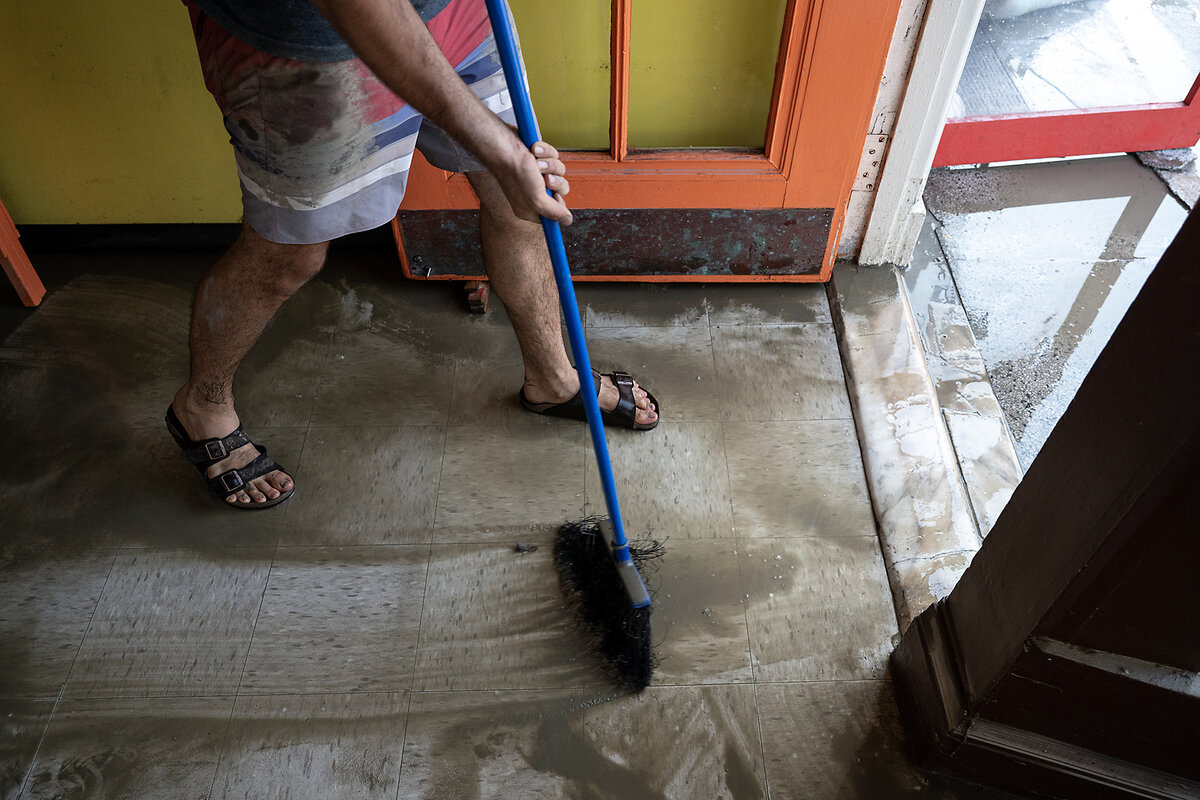Landmark Vermont ‘climate superfund’ law would make polluters pay for climate change
Loading...
Vermont on Thursday became the first state in the United States to demand that oil and gas companies pay for the costly impacts of climate change – a move that many experts say could pave the way for similar legislation across the country.
Taking many climate advocates by surprise, Republican Gov. Phil Scott allowed passage of the new, bipartisan Climate Superfund legislation, which lets Vermont’s department of natural resources recover costs from those fossil fuel companies responsible for more than 1 billion metric tons of greenhouse gas emissions in the state. The money would go toward climate change adaptation or resilience infrastructure.
Although most experts – including lawmakers themselves – expect a slew of legal challenges to the legislation, many see it as a groundbreaking effort to use a “polluters pay” model to manage skyrocketing expenses hitting state and local governments because of climate change. From revamping stormwater systems to deal with salt water incursion, to repairing bridges and roadways washed out from unusually heavy rain storms, to building new seawalls to protect from stronger hurricanes, municipalities across the country are looking at massive financial outlays.
Why We Wrote This
Increasingly costly incidents of extreme weather are taking a toll on state budgets. Flood-ravaged Vermont is trying to make carbon emitters pay, with a first-of-its-kind law that’s creative but legally controversial.
“States need this money,” says Martin Lockman, law fellow at Columbia University’s Sabin Center for Climate Change Law in New York. “States are facing increasing risk of natural disasters. They’re facing chronic pressures from their changing climate that are really going to stress their infrastructure, their economies. ... This is a creative attempt to place the costs of climate damage on the companies whose products produced it.”
First-of-its-kind law likely headed to court
The law will likely be challenged in court – notably by the fossil fuel industry.
The American Petroleum Institute, a lobbying group for the industry, has opposed the new law, saying that it is unconstitutional for a slew of reasons, as well as poor policy.
“This bill is nothing more than an unnecessary new fee on American energy that would only stall the innovative progress underway to accelerate low-carbon solutions while delivering the energy communities need,” says Scott Lauermann, API spokesperson.
The unique legislation expands the “polluter pays” principle, a central tenet of U.S. environmental law that essentially says polluters are responsible for cleaning up the messes they make. Congress passed the Comprehensive Environmental Response, Compensation and Liability Act in 1980 – a law commonly known as “Superfund” – to help force companies cover the cost of hazardous waste removal and mitigation.
The “climate superfund” concept expands on this, with the idea that carbon dioxide, a primary greenhouse gas responsible for human-caused climate change, is the pollutant.
This stance is bolstered by a growing field of climate modeling that traces the line from carbon emitter to extreme weather events. This “climate attribution science” can say that a particular event was a certain percentage more likely because of a warming climate. The Vermont legislation uses the Carbon Majors database to populate sophisticated models to determine the damages caused by greenhouse gas emissions in the state.
“We are at a point where there is a very sound, peer-reviewed methodology for connecting the dots between how much fossil fuel companies emitted into the atmosphere and what the economic costs of those emissions are on the ground here in Vermont,” says Elena Mihaly, vice president of Conservation and Law Foundation Vermont.
How a natural disaster led to legislation
The Green Mountain State experienced catastrophic flash floods and flooded rivers last summer, which dealt more than $2.2 billion in damages, according to the National Oceanic and Atmospheric Administration. Montpelier, Vermont, received a record-breaking 5.28 inches of rain, flooding the capital and damaging thousands of homes and businesses.
Some areas reported more than 8 inches of rain within 24 hours, causing extensive damage to communities as well as road and bridge infrastructure, and prompting hundreds of evacuations.
According to the National Climate Assessment, extreme precipitation events have increased in the Northeast by 60% since the 1950s.
For Vermonters, it’s been a wake-up call.
“For a long time, people figured Vermont was a climate haven. But after last summer’s flooding and then another flood in December, it really opened people’s eyes to the reality that climate damages are here and now,” says Ms. Mihaly.
Nearly two-thirds (64%) of Vermonters support the idea of requiring large oil and gas companies to pay a share of the cost for climate-resilient infrastructure projects, according to a poll by Data For Progress. Even with federal funding for disaster relief, the state and local municipalities are still paying tens of millions for repairs for last summer’s damage.
Justin Mankin, professor of climate variability at Dartmouth College, says last year’s floods were the “immediate catalyst” for climate action in the state, but just another example in a growing list of extreme weather events exacerbated by warming.
“This isn’t a problem for 2100,” says Mr. Mankin, noting that 2023 was the hottest year on record. “The impacts of warming are here now and they’re impacting people in tangible ways that can be documented. That’s a crucial change for social palatability for these types of legislation.”
California, Massachusetts, Maryland, and New York are considering similar legislation to establish climate resiliency funds.
Under the Vermont law, the state treasurer would compile a report of the companies responsible for more than 1 billion tons of greenhouse gas pollution in the state. Those companies would then make payments calculated based on each corporation’s emissions from 1995 to 2024.
Vermont’s Agency of Natural Resources would then allocate the funding for the Climate Superfund Cost Recovery Program Fund to enhance infrastructure and weatherproof public buildings, and address the health impacts of climate change.
Vermont still will need to pay for many other resiliency and adaptation projects. But proponents of the Climate Superfund see it as an additional, crucial revenue stream to help local communities prep for the worst.
“Vermont and Vermonters are resilient and will come together,” says Ben Walsh of the Vermont Public Interest Research Group. “But we’re just asking too much of them if we’re asking them to shoulder that burden by themselves.”








